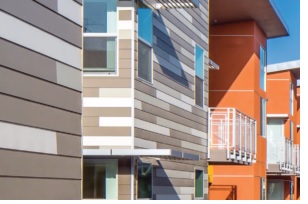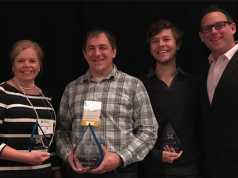Niche Neighborhoods & Economic Diversity Drive Austin to Top in Emerging Trends in Real Estate® 2017
Secondary Markets such as Columbus and Richmond Quietly on the Rise in New PwC, Urban Land Institute Study
DALLAS (October 27, 2016) – (RealEstateRama) — Niche neighborhoods and economic diversity are driving forces behind the strong showing of this year’s top ten U.S. cities, according to Emerging Trends in Real Estate® 2017, released today by PwC US and the Urban Land Institute (ULI). Austin, Texas wins “Top City,” thanks to its authentic, niche neighborhoods and depth of economic diversity, from manufacturing to education, health care and technology. Construction labor shortages and the rapid spread of digitization throughout the industry are also playing key roles in fueling 2017 real estate trends, along with “Optionality,” the multi-purposing of in-demand spaces.

Now in its 38th year, Emerging Trends in Real Estate® is one of the most highly regarded annual industry outlooks for the real estate and land use industry. It includes interviews and survey responses from more than 1,800 leading real estate experts, including investors, fund managers, developers, property companies, lenders, brokers, advisers and consultants.
“Viewed as a fluke when it hit the study’s top ten list 5 years ago, Austin’s rise to the top of the list signals the durability of the city’s long-term appeal to investors,” says Mitch Roschelle, PwC Partner and Real Estate Research Leader. “Austin, along with many of this year’s top 10 cities, boasts attractive, niche neighborhoods and a vibrant, diverse economy.”
“This year’s report shows that there are opportunities stemming from a shift in how, where, and when people work,” says ULI Global Chief Executive Officer Patrick L. Phillips. “One of the trends leading to new opportunities is multi-purposing of commercial space. We’re seeing different types of tenants using the same space for different uses at different times of the day, particularly in tight markets. Buildings with open, flexible space have a competitive advantage.”
- Niche Neighborhoods & Economic Diversity: Market characteristics such as authentic, niche neighborhoods with strong economic diversity are driving growth outside of gateway markets. The attractiveness to both workers and employers alike is supporting real estate growth.
- Labor Shortages: Construction labor shortages are driving up construction costs and stretching out project timelines, directly impacting availability of affordable real estate across all residential sectors.
- “Optionality” – A new driving force landlords can use to protect revenue potential by allowing multiple uses of the same space at different times, and permitting tenants to use only the space they need when they need it. For example, an office by day and a party/event venue by night.
- Digitization & Transparency: The digitization of real estate is revolutionizing the industry by improving accuracy, transaction speed and transparency, which in turn is fueling an “auto-correcting” real estate cycle. Rising property prices slowing transaction volumes while new supply remains under control is holding off the traditional “boom/bust” of previous cycles.
Top 10 Cities in Emerging Trends in Real Estate® 2017:
- Austin, TX
- Dallas/Fort Worth, TX
- Portland, OR
- Seattle, WA
- Los Angeles, CA
- Nashville, TN
- Raleigh/Durham, NC
- Orange County, CA
- Charlotte, NC
- San Francisco, CA
Dropping out of the top 10 market ranking this year are Atlanta, GA and Denver, CO due to concerns that new supply may be getting ahead of demand. Despite the drop, both markets remain in the top 20.
Top 5 Markets to Watch and Why:
- Columbus – A major university town, Columbus is seeing a surge in entrepreneurial activity.
- Richmond – The “hip factor” of downtown Richmond is on the rise.
- Pittsburgh – Emerging tech and other startups are flocking to Pittsburgh because of the access to talent from nearby universities and a 4% lower-than-the-national-average cost of doing business.
- Charleston – The Charleston economy is hitting on all cylinders with strong demographic growth and expanding technology, manufacturing and transportation industries.
- Salt Lake City – Salt Lake City is benefitting from a unique synergy between financial services and technology firms.
About the Urban Land Institute
The Urban Land Institute is a nonprofit education and research institute supported by its members. Its mission is to provide leadership in the responsible use of land and in creating and sustaining thriving communities worldwide. Established in 1936, the institute has nearly 40,000 members worldwide representing all aspects of land use and development disciplines. For more information, please visit uli.org or follow us on Twitter, Facebook, LinkedIn, and Instagram.
About PwC US
At PwC, our purpose is to build trust in society and solve important problems. PwC is a network of firms in 157 countries with more than 223,000 people who are committed to delivering quality in assurance, advisory and tax services. Find out more and tell us what matters to you by visiting us at www.pwc.com/us
contact: Trish Riggs at 202-679-4557
by














